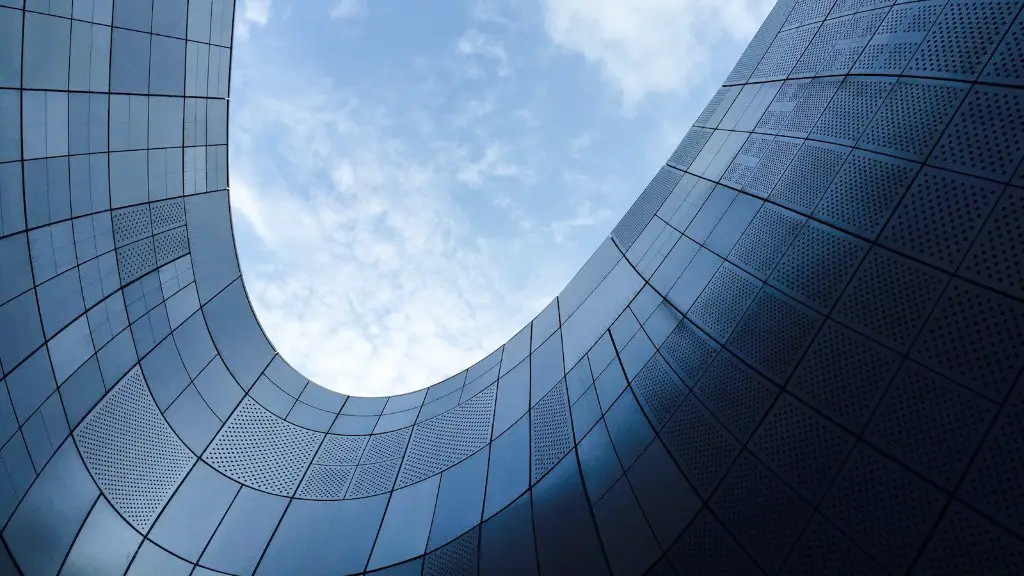Beginning your search for the right concept in architecture can be overwhelming. Ideas come to us in many mysterious ways, but the most reliable approach is to start by researching the field and analysing the trends. You may be looking for ways to make a building more energy efficient or to connect the public area with nature. Whatever your aim is, there are many aspects to consider when looking for a concept. In this article, we provide some tips to help you find the best concept for your design.
Typically, an architectural concept is developed as a set of ideas and objectives for the design of a building or landscape. It can involve ideas on land use, building form, materials, style, technology, cultural heritage and environmental considerations. Before embarking on the concept development process, it is important to define your requirements and objectives. Think about the purpose of the building and how it will integrate into its surroundings. Consider the characteristics of the location, budget and target audience.
The next step is to research potential designs. Look to past and current architectural trends to uncover inspiring and unique concepts. Visit different types of buildings and locations, and see how different ideas have been applied. Browse through a collection of relevant guide books, and read architectural magazines dedicated to new design ideas. While researching, you can even take notes of the elements you find inspiring, as it can help narrow down your design concept.
As you begin to develop ideas, create a collage with your gathered images, sketches and notes. This will help to produce unique designs while remaining within the boundaries of your objectives. Additionally, architectural software can be incredibly helpful in the concept stage, as you can use it to create 3D structures and explore different building techniques. However, your concept should also be informed by conceptual diagrams, sketches and written notes.
In addition to creative and technical considerations, you should also consider the feasibility of your concept. Check building regulations and industry standards to ensure the concept is safe and feasible to construct. Furthermore, be sure to consider the resources available, take time to understand the local context and discuss the concept with a diverse range of stakeholders.
Ultimately, talk to professionals. Architects and experienced designers will have invaluable insights, tips and resources to help you perfect your concept. Talking with people who have been in your position before can give you the clarity of vision to shape a comprehensive and feasible idea. Professional advice and knowledge can take the concept to whole new modern heights and prevent potential costly mistakes.
Materials and Construction Technology
Materials are another important consideration in the concept design Stage. Familiarising yourself with the properties and applications of different materials will help you choose the most suitable ones for your design. Furthermore, construction technology and digital tools are increasingly employed in concept designs. Innovations in the form of digital and physical models can help you create an accurate and impactful design, while maintaining cost efficiency.
New construction technologies have a significant impact on the design process. Research not just the latest trends, but also innovative product demonstrators, student and manufacturers’ works, and especially those of the local industry. You may be surprised to find that a local manufacturer can suggest ideas or provide new materials or technologies that you haven’t previously considered. Be sure to attend industry events and listen to advice in order to keep up to date with current practices and advancements.
During the concept design stage, you may also want to consider the aesthetic of your design. Think about how the building will look when constructed and how materials may affect the overall look and feel of the design. The appropriate colour and texture of materials can often add a unique and creative touch to a concept.
Complexity and Functionality
Architectural designs should be both functional and aesthetically pleasing. Consider how your overall design will interact with other components, such as the environment, climate, physical space and how it will be used by the public. By considering the level of complexity, you can reduce the amount of risk involved when constructing the finished product. Look at ways to simplify existing concepts or ideas to make it simpler, but still viable.
Consider your design’s durability and ensure it meets safety requirements. Can you make use of renewable energy sources to create a more sustainable design? Consider how your building will blend into its surroundings and if there is a need for additional indirect or hidden spaces. Thinking outside of the box during concept creation often yields unexpected and interesting ideas.
When designing a building, it’s always important to consider how it will be used and how it can be improved over time. Think about how your concept will be affected by social and technological changes, and plan for the inevitable change that will occur due to external forces in the future.
Modern Thinking and Flexibility
Modern thinking and flexibility are two essential considerations during the concept design stage. Think about how the design can be adapted and manipulated to fit changing needs and environments. Look into potentially disruptive modernisations that could make the concept more efficient, economical and suitable for future uses. Furthermore, pay close attention to how the design performs and consider how it will age over time.
The concept design stage is when you think freely and develop the most efficient, feasible and impacting concept. Take advantage of this stage to understand the design process and ensure it cleverly integrates with the environment, cultural heritage and other elements. If you’re struggling to be creative, pause and think anew. Listen to several points of view, experiment and use your imagination. With enough research and decision making, you will be able to bring a unique and efficient concept to life.
Glean Insight from Existing Architecture
When looking for inspiration, don’t forget to look to existing architecture. Examine iconic buildings from all around the world to gain perspective, experiment and replicate those elements that you find most impactful and inspiring. Utilise sites, books and magazines for inspiration and data gathering.
Learning from successful buildings of the past can take the design concept to new heights. Analyse the relevant research and interviews of success stories and celebrate the successes of others. Talk to the innovators and discover their process. Understanding how they achieved award-winning designs will provide invaluable insight as you develop your concept.
You can also glean insight by immersing yourself and visiting architectural sites. Whether you travel to cities in different countries or simply explore landmarks in your local area, the experience of seeing a design in the flesh can be incredibly inspiring. Furthermore, spending time in the build environment will help to refine your concept and further define your objectives.
Consulting Specialists for the Final Touches
At this point, the concept design will be complete and robust. However, seeking the advice from specialists in the field is highly recommended. Bring in a specialist consulting firm to ensure the concept meets all the relevant regulations and standards and that it is suitable for the target audience. Furthermore, they will be able to offer valuable insight into the practicality of the concept and can provide feedback on improvements to the design that could be made.
It is also important to have the concept tested. Consider conducting a pilot program to test the concept before it is fully unveiled. Furthermore, investigate further once the concept has been deployed – determine what works, what could be improved and strive to develop the concept further.
Combining the Different Stages to Develop an Architectural Concept
Developing a concept in architecture can be a stressful and time consuming process. By following the steps outlined above, you will be able to avoid many of the common issues and costly mistakes associated with concept design. Keep researching, developing, analysing and testing in order to refine your concept to the highest standard.
Remember the importance of analysing trends, familiarising yourself with new construction technologies and modern thinking, taking advice from professionals and testing the concept in the field. Combining all these different stages can help you develop an outstanding and award winning design.





